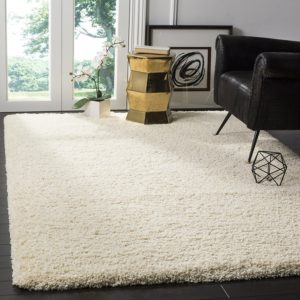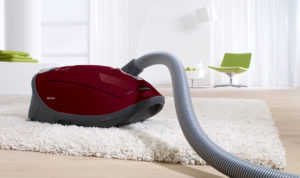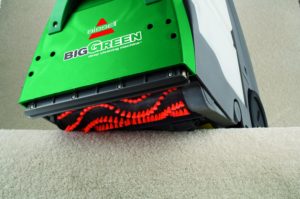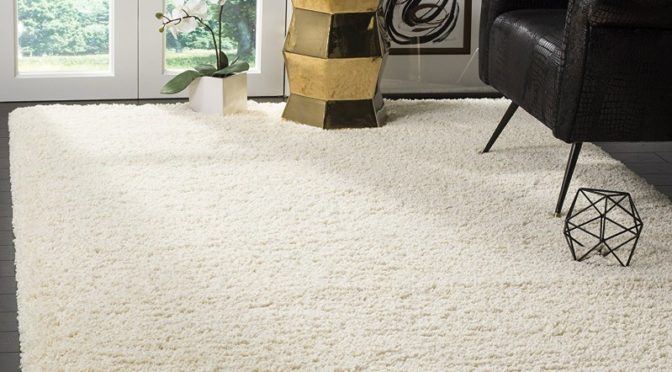
A carpet’s density is one of a range of factors that tie into its overall quality, durability, and performance. However, there are a range of other factors that play interrelated roles in determining whether the carpet you’re about to buy will still be in your home thirty years later or will have rotted away in a landfill long before then.
We’ve talked about carpet face weight, fiber twist, synthetic and natural construction, style, and manufacturer warranties as factors you can use to determine a carpet’s quality. Today we’ll look at carpet density in detail and answer some of the most frequently asked questions about it, including what it is, how to tell it apart from face weight, whether it’s important at all in determining durability, how it’s calculated, which minimum values to expect, and whether you’ll benefit from particular carpet cleaners and vacuums when caring for your carpets.
What is carpet density and is it different from carpet face weight?
Although many people think they’re one and the same, the density and face weight of a carpet are two different concepts and measurements. Carpet face weight refers to how much a carpet’s fiber weighs per square yard; it’s a measurement made in ounces. Carpet density has to do with the spacing of carpet fibers into carpet backing. This is known as tufting; the closer it is, the greater the density of the carpet.
How important is carpet density in determining the quality and durability of a carpet?
Carpet density by itself doesn’t tell you any more about a carpet’s quality than a carpet’s face weight; it’s all about context. If you can find every factor in a carpet’s construction, including the fiber type, face weight, twist, and density, you’ll have a good idea of how the carpet was made and how long it’s likely to last. If you add all this up while considering the length of the warranty offered on the carpet, you can get a very good idea of its quality and of how many years it’s likely to provide good performance. Taking all other factors out of consideration (e.g., by matching a pair of carpets that are equal in every other respect), a carpet with a higher density will generally be more durable.
How do you calculate carpet density?
To calculate carpet density, use the formula of face weight x 36 / pile height. In other words, if you measure the carpet face weight (which is given in ounces), multiply it by 36, and divide it by the pile height (the height of the carpet fiber measured in fractions of an inch), you’ll get the density, which is given in oz / cubic yard. You’re going to get a four digit number in your calculations. As an example, if you take carpet with a 60 oz face weight and a .75 inch pile height, it’s density will be 2,880 ounces per cubic yard (60 x 36 / .75 = 2880).
What is a minimum carpet density value to look for when buying a carpet?
When buying a carpet to use in typical home environments, you’ll want to see a density value of at least 3,600. Of course, more is better, as the higher the value, the longer your carpet is likely to last in a home before it begins to noticeably break down. The Carpet and Rug Institute recommends a minimum carpet density of 5,000 ounces per cubic yard for carpets used in commercial environments (e.g., department stores, malls, etc) where heavy foot traffic can be expected.
Do different carpet densities require different carpet cleaners or vacuums?

When it comes to choosing a carpet cleaner or vacuum to work well with your carpet, carpet density is unlikely to make a difference in most environments, but can play a significant role with high-pile and soft carpets. These carpets have a well-earned reputation for being far more difficult to vacuum than low- or medium-pile carpets, which most vacuums are capable of coping with.
We’d recommend the Miele Complete C3 Soft Carpet for work with dense carpeting, although it’s equally capable with all carpet piles and styles and is as much of a buy-it-for-life machine as you’re likely to find in vacuum cleaners today.

When it comes to carpet cleaners, you have more flexibility, as most carpet cleaners are designed to handle carpets of a range of densities. However, given the greater complexity in a carpet cleaner compared to that of a vacuum, they’re also more likely to break down if not made to last. This is why we almost always limit our recommendations to the Bissell 86T3 Big Green. We’ve reviewed and compared it in a range of situations and against a range of cleaners (e.g., vs. Rug Doctors, vs. the Oreck Revitalize, and vs. itself) and consistently found it to be the best carpet cleaner on the market for under $1,000. Both of these machines are the ones you want to buy if you don’t want to worry about your carpet cleaner and vacuum breaking down for decades.
![]() You can buy the Bissell 85T3 Big Green carpet cleaner here on Amazon. You can buy the Miele Complete C3 Soft Carpet here. And you can buy that plush shag polyester rug here.
You can buy the Bissell 85T3 Big Green carpet cleaner here on Amazon. You can buy the Miele Complete C3 Soft Carpet here. And you can buy that plush shag polyester rug here.
![]() Canadians can buy the Miele Soft Carpet here and the Bissell Big Green here.
Canadians can buy the Miele Soft Carpet here and the Bissell Big Green here.
 If you find our research on PMC helpful, you can follow our efforts to keep maniacally reviewing home cleaning tools by shopping through our links above. We promise to keep fighting the good fight against every horror children, animals, and grown, yet messy humans can inflict upon a clean home.
If you find our research on PMC helpful, you can follow our efforts to keep maniacally reviewing home cleaning tools by shopping through our links above. We promise to keep fighting the good fight against every horror children, animals, and grown, yet messy humans can inflict upon a clean home.

